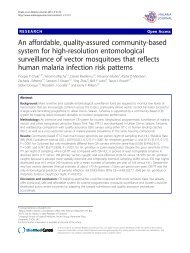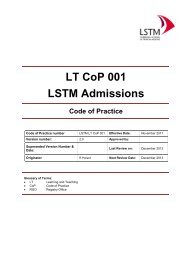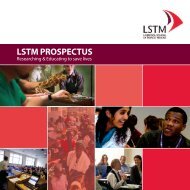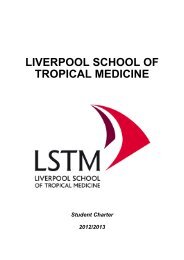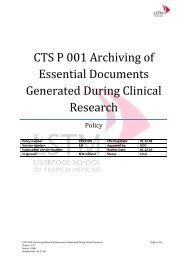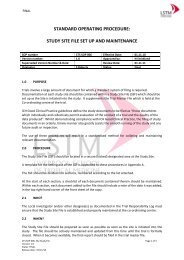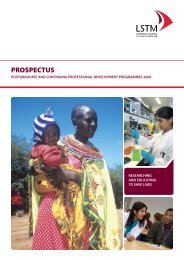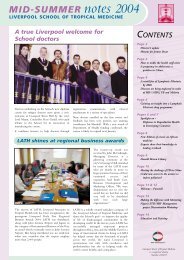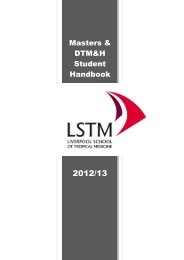Gender influences on child survival, health and nutrition: a ... - Unicef
Gender influences on child survival, health and nutrition: a ... - Unicef
Gender influences on child survival, health and nutrition: a ... - Unicef
You also want an ePaper? Increase the reach of your titles
YUMPU automatically turns print PDFs into web optimized ePapers that Google loves.
<str<strong>on</strong>g>Gender</str<strong>on</strong>g> Influences On Child Survival, Health And Nutriti<strong>on</strong>: A Narrative Review<br />
cash are actually found to breastfeed more. The authors hypothesise that in this case the work<br />
envir<strong>on</strong>ments are significant as in South Asia <strong>and</strong> Sub Saharan Africa working c<strong>on</strong>diti<strong>on</strong>s are less formal<br />
than in Latin America <strong>and</strong> the Caribbean, where they tend to be in urban c<strong>on</strong>texts <strong>and</strong> where there is<br />
less flexibility for <strong>child</strong>ren to accompany mothers to work.<br />
Other studies using similar indices to measure women’s relative power within the household have found<br />
associati<strong>on</strong>s with <strong>child</strong> <strong>health</strong> outcomes. Gaiha <strong>and</strong> Kulkarni (2005) found in rural households across<br />
India that reduced stunting was associated with increased maternal age <strong>and</strong> educati<strong>on</strong> <strong>and</strong> with<br />
residence in a female headed household. A study undertaken in Egypt by Kishor (2000) used data from<br />
the country’s 1995 DHS to c<strong>on</strong>struct an index of women’s empowerment which combined a series of<br />
indicators chosen to represent a holistic c<strong>on</strong>ceptualisati<strong>on</strong> of empowerment 12 . Kishor’s study provides<br />
multivariate analyses to explore the correlati<strong>on</strong>s between women’s empowerment <strong>and</strong> <strong>child</strong> <strong>survival</strong><br />
<strong>and</strong> <strong>health</strong> (as measured by whether <strong>child</strong>ren had received eight recommended immunisati<strong>on</strong>s). As the<br />
results included in the summary table suggest, two dimensi<strong>on</strong>s of women’s empowerment were<br />
significantly correlated with both <strong>child</strong> <strong>survival</strong> <strong>and</strong> <strong>health</strong>: lifetime exposure to employment, <strong>and</strong> family<br />
structure amenable to empowerment.<br />
Other studies included in the table found that direct indices of ‘women’s aut<strong>on</strong>omy’ within their<br />
households that combine indicators of women’s greater relative decisi<strong>on</strong>-making power <strong>and</strong> access to<br />
resources (e.g. whether women are able to make decisi<strong>on</strong>s to travel outside the home to pay visits to<br />
<strong>health</strong> instituti<strong>on</strong>s, <strong>and</strong> whether they are able to make decisi<strong>on</strong>s about household purchases) are<br />
positively associated with reduced levels of stunting am<strong>on</strong>g <strong>child</strong>ren younger than five (Dancer &<br />
Rammohan 2009; Shroff et al. 2009) <strong>and</strong> improved <strong>child</strong> <strong>survival</strong> (Fantahun et al. 2007; Hossain, Phillips<br />
& Pence 2007).<br />
Overall, these studies underline that women’s bargaining power is an important factor in exploring <strong>child</strong><br />
<strong>survival</strong>, <strong>health</strong> <strong>and</strong> nutriti<strong>on</strong> but the extent to which improvements in women’s status are c<strong>on</strong>nected to<br />
improvements in young <strong>child</strong> <strong>health</strong> <strong>and</strong> nutriti<strong>on</strong> status may rely <strong>on</strong> broader c<strong>on</strong>textual factors.<br />
REVIEW OF STUDIES<br />
12 Secti<strong>on</strong> 4 (<strong>on</strong> quantitative methods) of the Guidance document which accompanies this literature review<br />
provides more detail <strong>on</strong> the different types of empowerment indicators used by Kishor in this study.<br />
28



